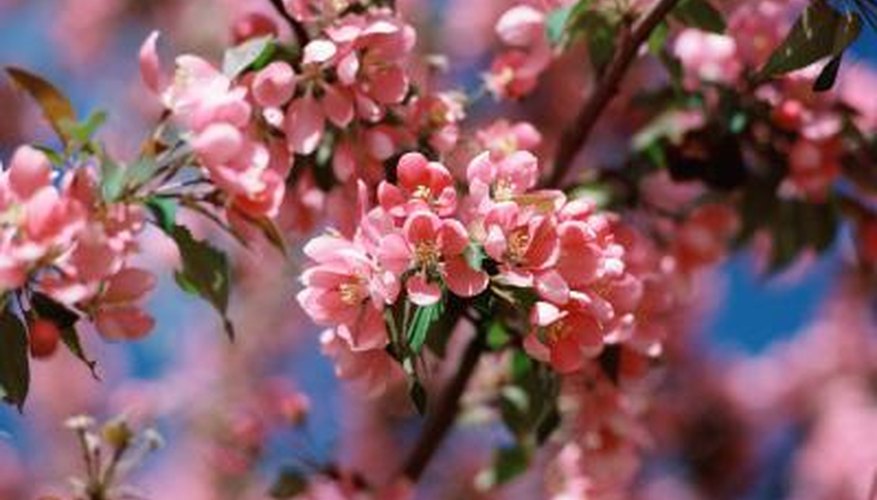Cherry curl leaf disease affects all types of cherry trees. Although unattractive, the disease is not life-threatening to the tree. Still, severely infected trees can be weakened. Cherry leaf curl disease is sometimes called "witches' broom" because the bare branches often develop clusters of twigs that look somewhat like the end of a broom.
Fungus
Cherry leaf curl disease is caused by the fungus Taphrina deformans or cerast. The fungus also affects peach and nectarine trees. The fungus spreads on water, sticking in the cracks of the tree's bark and on newly developing buds. As the weather warms, the spores reproduce on the flowers and emerging leaves, but only if they are wet. Once a branch is infected, however, it will always produce infected leaves if preventive measures are not taken.
- Cherry leaf curl disease is caused by the fungus Taphrina deformans or cerast.
- The fungus spreads on water, sticking in the cracks of the tree's bark and on newly developing buds.
Symptoms
Leaves infected by the fungus will appear thickened and discoloured. They may turn brown, yellow or even purplish and curl up or twist. Eventually, they dry up and fall off the tree. Young, severely infected trees may drop a great number of their leaves, but mature trees may have only a few infected branches. Some of the affected branches may also develop clusters of tangled twigs.
- Leaves infected by the fungus will appear thickened and discoloured.
- Some of the affected branches may also develop clusters of tangled twigs.
Prevention
The best way to prevent the disease from adversely affecting your tree is to keep it healthy. Apply a 3-inch layer of mulch each spring to the area around your tree to stifle weed growth and help the soil retain moisture. Rake up and destroy fallen leaves in the fall to prevent the fungus from overwintering on the leaves. Spray the tree with a fungicide in the fall, after the leaves have dropped, and again in the spring just before the leaves begin to open.
- The best way to prevent the disease from adversely affecting your tree is to keep it healthy.
- Apply a 3-inch layer of mulch each spring to the area around your tree to stifle weed growth and help the soil retain moisture.
Treatment
Once a tree is infected, there is no way to cure it. You can, however, prevent the spread of fungal spores by pruning off infected branches. Remove them 12 inches below or beyond any affected areas.
